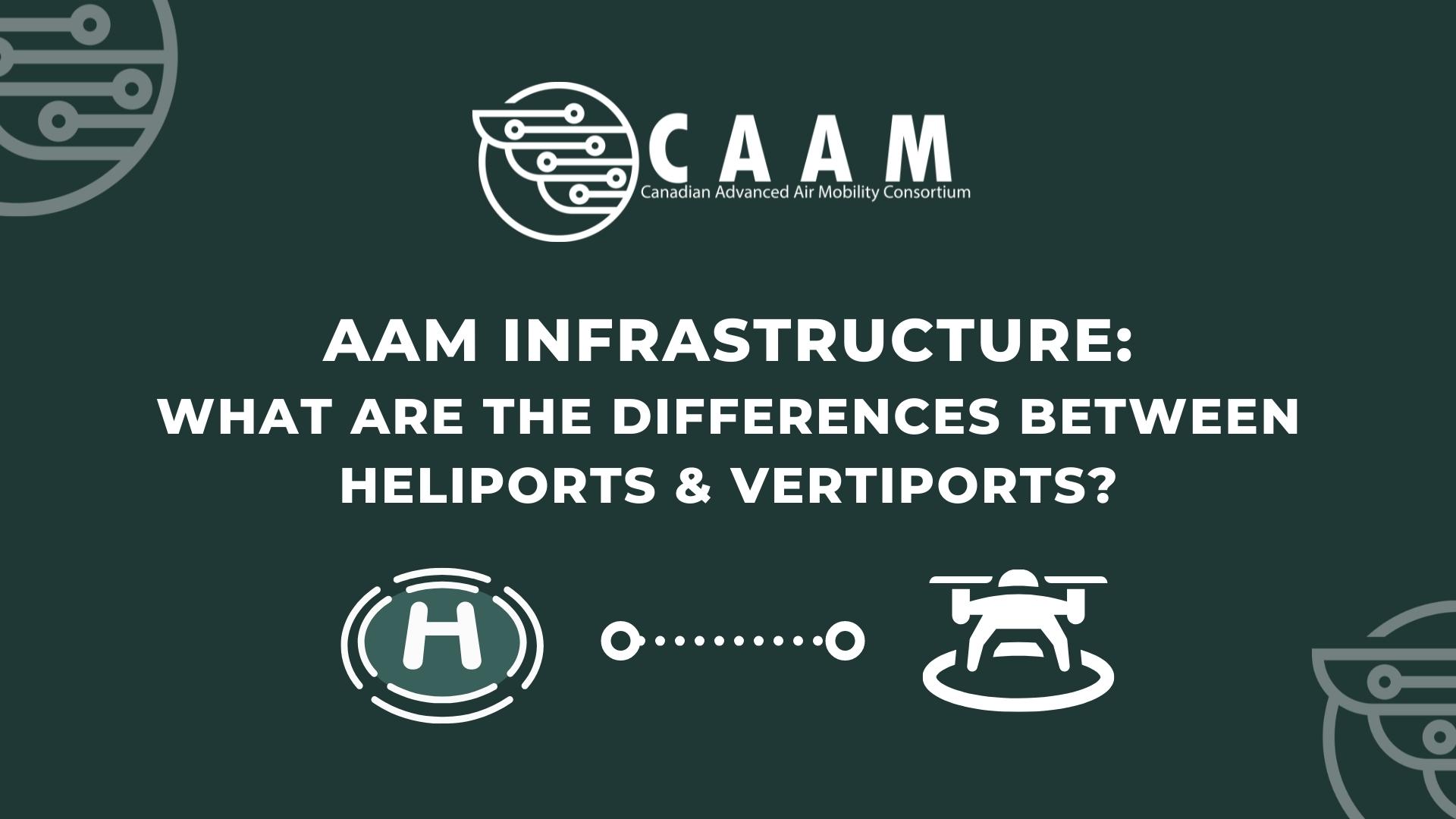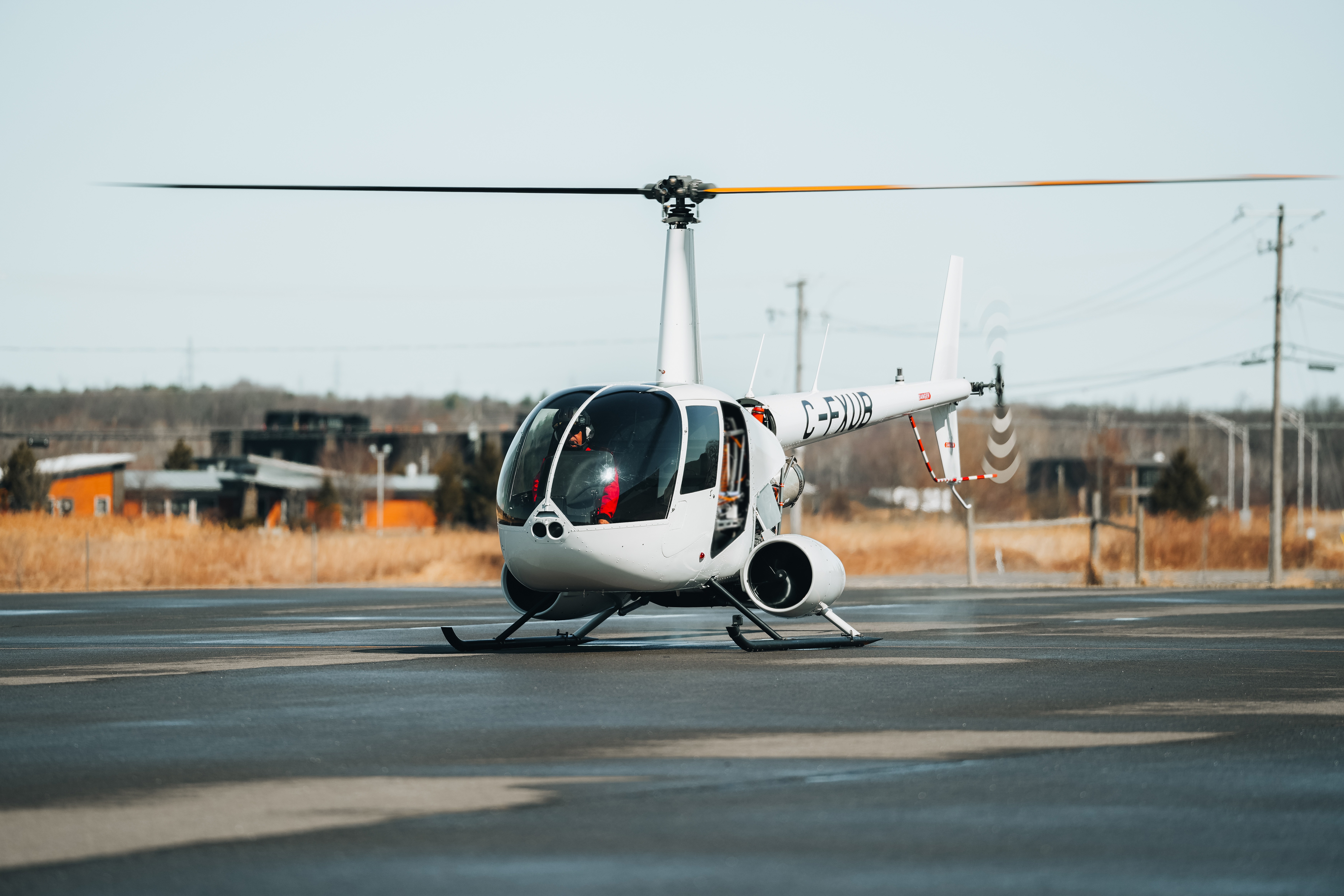
Vertiports are critical for Advanced Air Mobility (AAM), especially Urban Air Mobility (UAM). After all, the sustainable and equitable air taxi future will only be possible if there are enough vertiports throughout urban centres. But before going over how heliports and vertiports are different, it’s worth learning a bit more about their similarities.
AAM infrastructure: The similarities between vertiports and heliports
The Northeast UAS Airspace Integration Research Alliance, Inc. (NUAIR), working alongside Deloitte, Boeing, Crown Consulting, Mosaic ATM, 5-Alpha LLC, Helicopter Association International (HAI), and the General Aircraft Manufacturers Association (GAMA), came up with the following definition of what is a vertiport, “A vertiport is a collective term referring to areas designed specifically for AAM aircraft to take off and land, much like a heliport is a designated area for helicopters.”
The companies also released another term, “vertistops.” Vertistops would serve only for drop-off and pickups, while vertiports would be somewhere where the aircraft could recharge (electric aircraft), refuel (hydrogen aircraft), pass through maintenance, etc.
As the companies highlighted above, vertiports and heliports share many similarities, especially when talking about vertiports and vertistops located in urban centres that’ll serve primarily Vertical Take-Off and Landing (VTOL) aircraft.
To summarize, vertiports and heliports are stopping points for VTOL aircraft. They can be on top of buildings, open areas, or airports. Both can serve as a quick-stops—loading and unloading, for example—or as a longer stay for recharging (electric aircraft), refuelling (hydrogen or fossil fuels aircraft), maintenance, etc.
Now that the similarities are apparent, it’s time to see the differences.
AAM infrastructure: The differences between vertiports and heliports

To calculate the size of a heliport, regulators use the rotor diameter to calculate the Touch-Down and Lift-Off area (TLOF), the Final Approach and Take-Off area (FATO), and safety area—a defined area surrounding the FATO intended to reduce the risk of damage to aircraft accidentally diverging from the FATO. Because AAM VTOL aircraft are different from helicopters, coming in all shapes and sizes, regulators will probably use the maximum dimension of the VTOL rather than the rotor diameter to calculate the size of the vertiports.
As noted by Megan Taylor, Asya Saldanli, and Andy Park, another problem is,
Vertiport design is complex because of dynamic operations. A helipad is not a vertiport and the analysis done for heliports is not enough for the high throughput expected for vertiports. Stakeholder tensions, noise, and safety considerations need to be considered. Therefore, there is a knowledge gap for architecture companies in the process of designing and building Vertiports with the optimal configuration of operational pads on the Vertiports.
As noted by this Digital Journal article, another difference between heliports and vertiports regards the power grid,
Another key consideration is access to electricity. While charging a handful of electric Vertical Take-Off and Landing vehicles (eVTOLs) at a time can be achieved with relatively normal power supplies from the grid, a vertiport designed to recharge a dozen or more aircraft may require its own substation.
Because helicopters aren’t electric, there’s no need to worry about that. If there’s enough space for refuelling, the vertiport is viable. However, building substations is trickier and harder than ‘gas stations,’ so whoever builds the vertiports needs to position them strategically. And that raises a question that still doesn’t have an answer, so it’s unclear whether it’s a difference or a similarity. Who will build the vertiports?
AAM infrastructure: Difference or similarity?
While Government and the private sector share the building of helistops, the Governments are the major player when it comes to airports and, consequently, heliports,
Most airports around the world are owned by federal or local governments. And while many private companies deliver fuel and food, provide security and perform a myriad of other functions, the vast investment needed to develop airports is principally provided through public finance.
But will Governments massively invest in infrastructure for something that is still a couple of years ahead? If the answer is no, the private sector may step up to the plate. But that’s also problematic thinking on today’s available examples.
Electric aircraft aren’t massive available yet, but cars are. And looking at them, it’s possible to see the problems of leaving everything in the hands of the private sector. While most charging stations are one size fits all, Tesla supercharger, the best available, isn’t. If that happens in AAM, aircraft won’t be able to land wherever is more convenient to passengers, but instead, they’ll land where is more convenient to them. And this may kill one of the best characteristics of UAM: to make moving around cities easier. If passengers can’t quickly arrive close to where they need to be, why use AAM rather than stick to cars, buses, or trains?
If the answer to the question “Who will build the vertiports?” is different from “Who builds heliports?,” then there’s a chance UAM will never become a reality. But suppose it’s similar because the Governments are investing or there’s a partnership between public and private sectors. In that case, UAM will take flight and revolutionize how people move around cities.
Click here to learn more about the importance of AAM being inclusive.
By Giovani Izidorio Cesconetto



